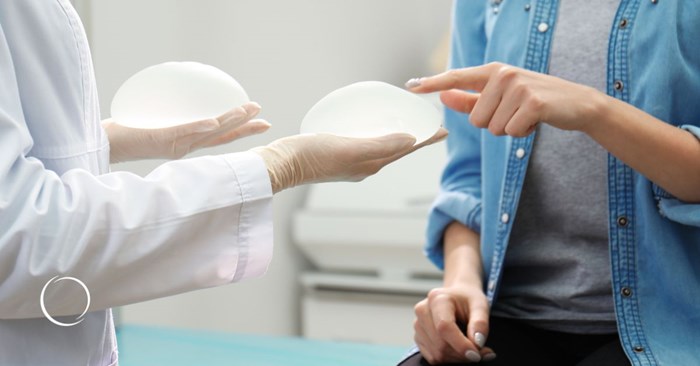Sizing up: Discover your options for breast implants

Although other forms of cosmetic surgery are gaining popularity – especially breast lifts and breast reduction – breast augmentation still reigns supreme. Statistics from the American Society of Plastic Surgeons indicate almost 300,000 breast augmentation surgeries were performed in 2022.
Breast augmentation remains one of the top cosmetic surgical procedures in the United States.
There is no one-size-fits-all approach when it comes to breast augmentation. As technology changes, so do surgical techniques and breast implant materials, giving women today more options than ever before. From silicone to saline, smooth to textured, how do you know which implant type is right for you?
ASPS Member Surgeons Anna Steve, MD, and Heather Furnas, MD, FACS, share their thoughts on how far the industry has come and how you and your doctor can choose the best implant when you are ready to size up.
What are today's breast implant options?
Breast implants come in a range of materials and shapes. Saline breast implants are made with an outer silicone shell and filled with sterile saline.
"Saline implants are made of 'salt water,' so if they rupture, they deflate," said Steve. "From a safety perspective, this is a favorable option because you can recognize the rupture in real-time."
For some patients, saline implants have a slightly less "natural" feel than other alternatives.
The other option is silicone breast implants, which are filled with a soft silicone gel. Silicone gel tends to give the breast a more natural texture and feel. Furnas said that in her practice, nearly 100% of her patients opt for round silicone gel implants.
Gummy bear breast implants are a subset of the traditional silicone implant. The silicone consistency in gummy bear implants is thicker than traditional ones, making them firmer but allowing them to maintain shape.
No matter what, Steve recommends monitoring silicone implants for ruptures beginning at the five-year mark and then every two to three years postoperatively since silicone does not "deflate" like saline.
The material that is best for you depends on your aesthetic goals and desires. Some women prefer the natural feel of silicone, which can give breasts a full appearance. Saline implants have a higher risk of producing visible ripping in more petite women or those with minimal breast tissue, but it is easier to identify problems when the implant ruptures.
Implant shapes
Breast implants also come in a range of shapes and vary by dimension. Depending on the brand, dimension is referred to as profile like low, low plus, moderate, moderate plus, full and extra full.
"Typically, the implant profile is the dimension that will change 'the look' of your final outcome the most," said Steve. "Lower-profile implants tend to offer more subtle, natural-looking results. Higher profile implants tend to achieve more augmented, fuller volume results."
Why cup size isn't a good measure
Cup size varies a lot by bra brand. There is no standardized cup sizing for women, which can create confusion when someone is trying to explain what breast size they desire.
"I find a more useful tool is to go through photos because photos can really calibrate your language," said Steve. "Patients often use similar language to describe very different looks, so what is 'natural' to one person might be very different to what is 'natural' looking to another. Photos can help make sure you're on the same page with your plastic surgeon in terms of what you are actually communicating."
Point out photos both of what you do and don't like to your plastic surgeon. It is important your surgeon knows what is an undesirable result for you. Show your surgeon a variety of photos including what is too small, too large and what you believe is just right for your body.
Choosing an implant is about choosing what works for your body
Selecting an implant isn't just about choosing a size and shape. Those are only two of the elements of the puzzle. Furnas said she assesses patients' size and shape goals, then examines their anatomy and creates a plan.
"I plot it out," said Furnas. "This is the width of the implant. This is the projection of the implant. This is where it is going to sit, to paint it as accurately as I can so we are both in agreement."
That's because implants look different on different people.
"Your frame, anatomy, skin quality, breast shape and amount of natural breast tissue will also contribute to how an implant will look on you," said Steve.
It is crucial to choose an implant that offers the aesthetic qualities you prefer while understanding that your expectations may need to shift depending on your frame and the size of your chest wall.
Never be afraid to communicate with your doctor and show them photographs. Your doctor wants you to open up about the look you want to achieve through breast augmentation. An experienced physician can help you navigate the process, and together, you can find the size, shape and material that suits your needs.
To find a qualified plastic surgeon for any cosmetic or reconstructive procedure, consult a member of the American Society of Plastic Surgeons. All ASPS members are board certified by the American Board of Plastic Surgery, have completed an accredited plastic surgery training program, practice in accredited facilities and follow strict standards of safety and ethics. Find an ASPS member in your area.
